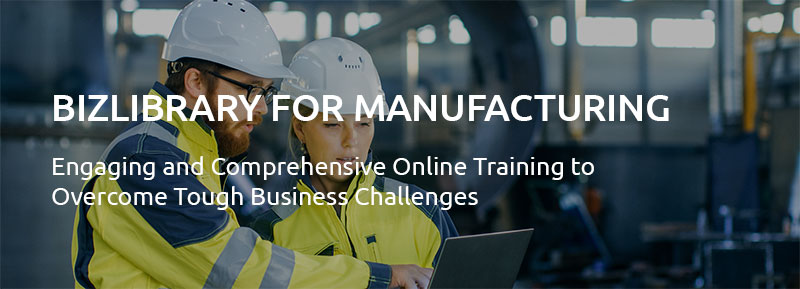Let’s not sugarcoat it: the manufacturing skills gap in 2025 is still very real, still very frustrating, and still costing companies serious money.
But unlike in the pre-COVID era, we now have data, digital tools, and workforce strategies that can actually make a dent. So, if you’re ready to move beyond the tired hand-wringing and into practical action—keep reading.
First, the Numbers (Spoiler: They’re Not Cute)
- According to the 2024 Deloitte + Manufacturing Institute study, 3.8 million manufacturing jobs will need to be filled by 2033—and 1.9 million of those may go unfilled due to skills gaps.
- As of Q1 2025, the U.S. still has 449,000 open manufacturing positions. Yes, still.
- In a 2025 Manufacturing Dive survey, 39% of hiring managers said their open roles are stalled because applicants lack hard skills. Another 33%? Missing soft skills.
So, if it feels like you’re constantly hiring and still understaffed, you’re not imagining things. The importance of training in manufacturing industry settings has never been clearer.
Why Is There Still a Skills Gap in 2025?
Let’s break it down like a good maintenance tech troubleshooting a line stoppage:
The Workforce Is Aging Out
Retirements are hitting harder than a Monday morning shift change. Baby boomers are taking their generational knowledge with them, and there’s no one in line to grab the wrench—or the PLC manual.
Manufacturing Got a Glow-Up (But Gen Z Didn’t Get the Memo)
Modern manufacturing is high-tech, high-skill, and—let’s be honest—pretty cool. There are cobots, digital twins, and real-time data dashboards. Unfortunately, many young people still have a negative perception of manufacturing work due to a combination of outdated imagery, missing exposure, and cultural cues that make manufacturing appear unappealing or irrelevant. That perception gap is costing the industry talent.
The Work Itself Changed
Today’s shop floor isn’t just about machine operation—it’s about:
- Programming automated systems
- Troubleshooting industrial software
- Understanding IoT-enabled equipment
- Practicing lean thinking
- Oh, and don’t forget cybersecurity awareness (because yes, ransomware can hit CNC machines too)
The problem? Most workforce pipelines weren’t built for this shift. That’s why training programs for manufacturing employees must evolve to reflect current tech and real-world needs.
What to Actually Do About It
Let’s skip the buzzwords and talk real solutions:
1. Upskill, Reskill, and Keep the Skills Flowing
You can’t just hire your way out of this. You’ve got to build your bench.
- Train your line operators to become automation technicians.
- Reskill maintenance pros into mechatronics roles.
- Use blended learning (online + hands-on) to meet people where they are—whether they’re 20 or 62.
Need a content partner? Programs like Tooling U-SME and BizLibrary’s manufacturing library can bridge the gap with digital courses on CNC, lean, safety, robotics, and more.
2. Make Career Pathing the New Normal—for Everyone
Career ladders aren’t just for corporate HQ. Show your blue-collar team how to move from:
- Assembler → Mechanic → Automation Tech
- Operator → CNC Programmer → Toolmaker
- Maintenance Helper → Electro-Mechanical Tech → Facilities Lead
Create visual roadmaps with skills, timelines, and pay transparency. People stay where they can grow—and plan. The 2025 Workplace Learning Report by LinkedIn found that employees who move into a new role internally are 75% more likely to stay after two years compared to those who stay in the same role. That’s a direct return on your training for manufacturing investment.
3. Build Talent Pipelines—Don’t Just Wait for Them
Your future hires? They’re in shop class right now. Or working retail, wondering if there’s something better out there.
- Partner with high schools, trade schools, and community colleges.
- Offer paid internships, job shadowing, or “try-a-trade” days.
- Launch (or join) a registered apprenticeship program. Amazon’s Mechatronics and Robotics initiative is a strong example—because Gen Z wants tech and a paycheck.
If you’re serious about growing your team, training programs for manufacturing employees need to start long before they walk onto your floor.
4. Train for Tech, but Don’t Skip the Soft Stuff
Yes, we need PLC programmers. But we also need teammates who can:
- Communicate across shifts
- Solve problems on the fly
- Lead with emotional intelligence
Soft skills are no longer “nice to have.” They’re essential for frontline leadership, safety, and retention. LinkedIn’s Chief Economic Opportunity Officer Aneesh Raman asserts that “Soft skills are the new hard skills. The technical skills are giving way to the soft skills, becoming the it skills, the in-demand skills, the durable skills.” This could be due to the effort to implement AI and increased automation – soft skills are irreplicable by any machine.
This shift in emphasis further highlights the importance of training in manufacturing industry environments—not just for machines, but for people.
Bottom Line: Stop Waiting for the Skills to Magically Appear
The manufacturers that win in 2025 are the ones who invest in people as much as they invest in equipment.
Because no matter how many shiny machines you’ve got, you still need humans who can operate, fix, and improve them.
So the question isn’t “When will the skills gap close?”
It’s: “What are you doing this year to shrink it?”
Want a Little Help?
If you’re serious about building a future-ready manufacturing team, BizLibrary’s industrial training content (plus our partnership with Tooling U-SME) is designed to help you hit the ground running.
Training for manufacturing isn’t a luxury—it’s a survival strategy. Let’s talk. Your workforce of the future won’t train itself.
Learn more about our content library for manufacturing, and get in touch to see how our training solutions can work for you!

